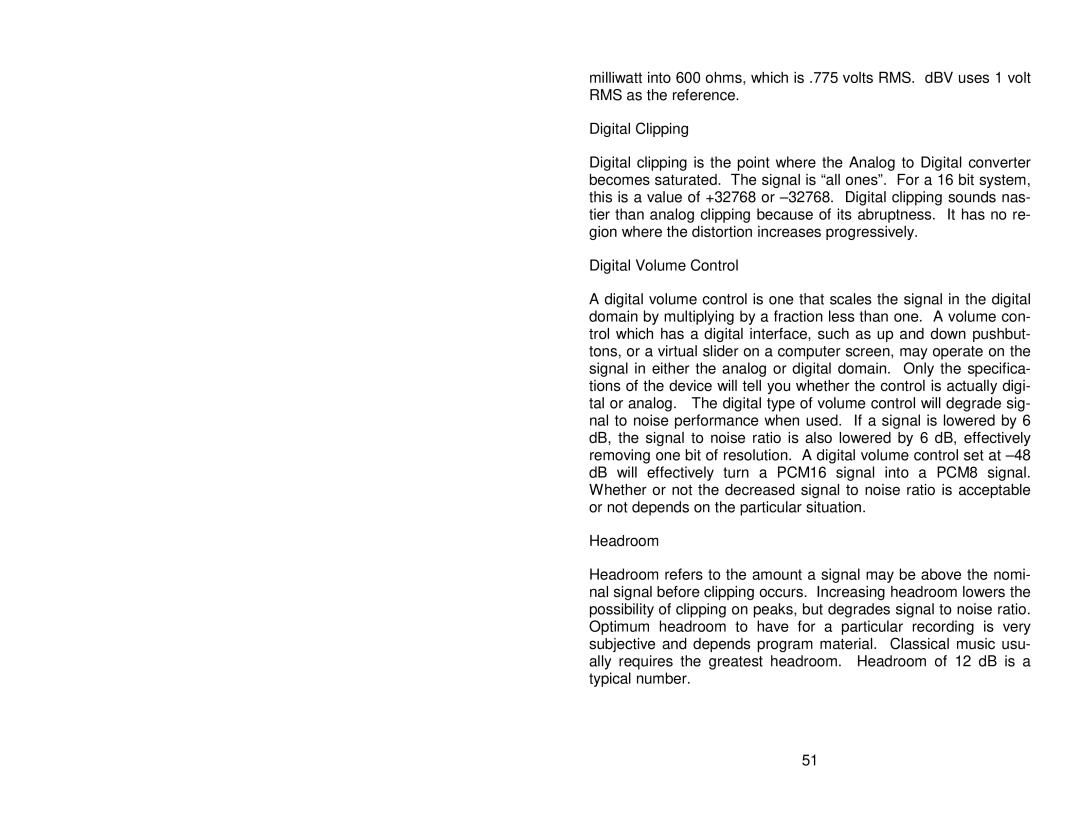milliwatt into 600 ohms, which is .775 volts RMS. dBV uses 1 volt RMS as the reference.
Digital Clipping
Digital clipping is the point where the Analog to Digital converter becomes saturated. The signal is “all ones”. For a 16 bit system, this is a value of +32768 or
Digital Volume Control
A digital volume control is one that scales the signal in the digital domain by multiplying by a fraction less than one. A volume con- trol which has a digital interface, such as up and down pushbut- tons, or a virtual slider on a computer screen, may operate on the signal in either the analog or digital domain. Only the specifica- tions of the device will tell you whether the control is actually digi- tal or analog. The digital type of volume control will degrade sig- nal to noise performance when used. If a signal is lowered by 6 dB, the signal to noise ratio is also lowered by 6 dB, effectively removing one bit of resolution. A digital volume control set at
Headroom
Headroom refers to the amount a signal may be above the nomi- nal signal before clipping occurs. Increasing headroom lowers the possibility of clipping on peaks, but degrades signal to noise ratio. Optimum headroom to have for a particular recording is very subjective and depends program material. Classical music usu- ally requires the greatest headroom. Headroom of 12 dB is a typical number.
51
